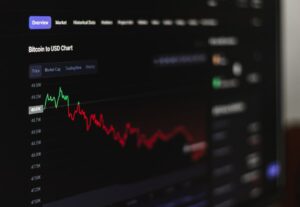Understanding the Basics of Foreign Exchange (Forex) Trading
Foreign exchange, commonly known as forex, is the largest and most liquid financial market in the world. With a daily trading volume of over $6 trillion, forex offers immense opportunities for traders to profit from currency price fluctuations. However, to navigate this complex market successfully, it is essential to understand the basics of forex trading.
What is Forex Trading?
Forex trading involves the buying and selling of currencies in pairs. For example, when trading the EUR/USD pair, you are essentially buying euros and selling US dollars, with the expectation that the value of the euro will appreciate against the US dollar. Traders aim to profit from the fluctuations in exchange rates, which can be influenced by various factors such as economic indicators, geopolitical events, and market sentiment.
Market Participants
Various market participants contribute to the liquidity and efficiency of the forex market. These participants include central banks, commercial banks, hedge funds, corporations, and individual retail traders. Each participant has different motivations and strategies, which can impact market dynamics.
Currency Pairs
Forex trading involves trading currency pairs, which are categorized into three types: major pairs, minor pairs, and exotic pairs. Major currency pairs include the most liquid and widely traded currencies, such as EUR/USD, GBP/USD, and USD/JPY. Minor pairs, also known as cross currency pairs, exclude the US dollar and consist of currencies from major economies, such as EUR/GBP or AUD/NZD. Exotic pairs involve the combination of a major currency and the currency of a developing or emerging economy, such as USD/ZAR or GBP/TRY.
Leverage and Margin
One of the key features of forex trading is the ability to trade on margin. Margin allows traders to control larger positions in the market with a smaller amount of capital. Leverage is expressed as a ratio, such as 1:100, which means that for every dollar in the trading account, the trader can control $100 in the market. While leverage can amplify profits, it also increases the risk of losses. Traders should use leverage cautiously and always employ risk management strategies.
Market Hours
Forex trading operates 24 hours a day, five days a week, as it involves global participants across different time zones. The market opens with the Asian session, followed by the European session, and then the North American session. The overlapping of sessions creates periods of high liquidity and volatility, offering trading opportunities for traders across the globe.
Technical and Fundamental Analysis
Forex traders utilize two main types of analysis to make trading decisions: technical and fundamental analysis. Technical analysis involves studying historical price data and using various tools and indicators to identify patterns and trends. Traders use charts, support and resistance levels, moving averages, and other technical indicators to generate trading signals.
Fundamental analysis, on the other hand, focuses on economic and political factors that can impact currency values. Traders monitor economic indicators, such as GDP, inflation rates, and interest rates, as well as geopolitical events and news releases to assess the fundamental strength or weakness of a currency.
Risk Management
Successful forex trading requires effective risk management. Traders should determine their risk tolerance and set appropriate stop-loss orders to limit potential losses. Additionally, diversifying the portfolio by trading multiple currency pairs and using proper position sizing techniques can help mitigate risk.
Choosing a Forex Broker
Selecting a reliable forex broker is crucial for a trader’s success. Considerations such as regulation, trading platform, spreads, commissions, customer support, and educational resources should be taken into account. It is important to choose a broker that aligns with your trading goals and provides a secure and transparent trading environment.
Conclusion
Understanding the basics of forex trading is the first step towards becoming a successful forex trader. By grasping concepts such as currency pairs, market participants, leverage, market hours, technical and fundamental analysis, risk management, and choosing a suitable broker, traders can develop a solid foundation to navigate the forex market effectively. However, continuous learning, practice, and adaptability are essential to thrive in this dynamic and ever-changing market.






